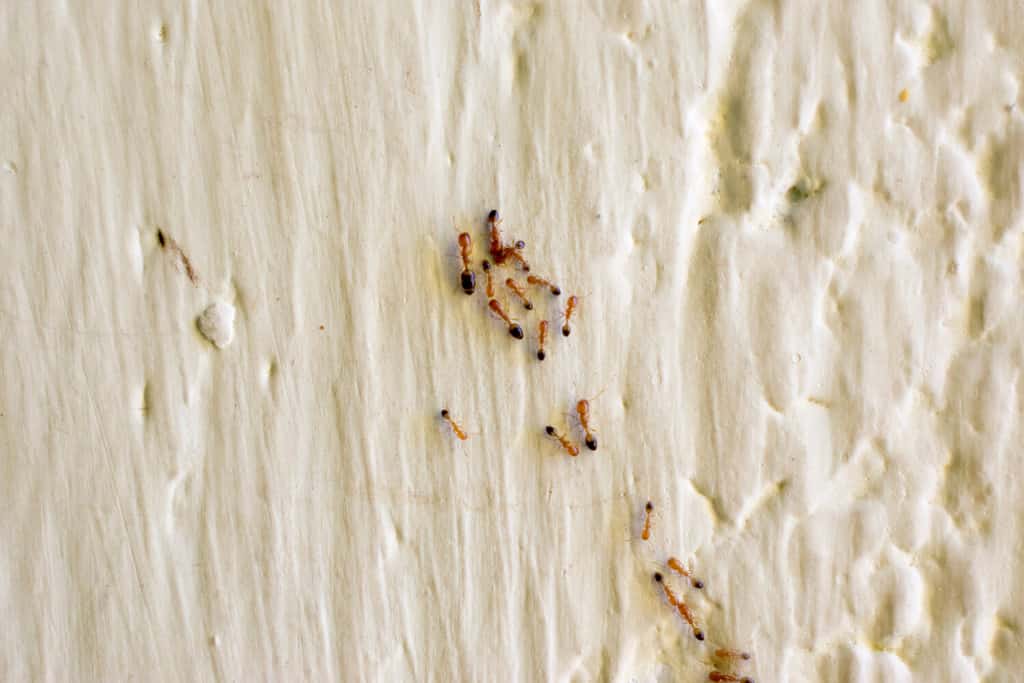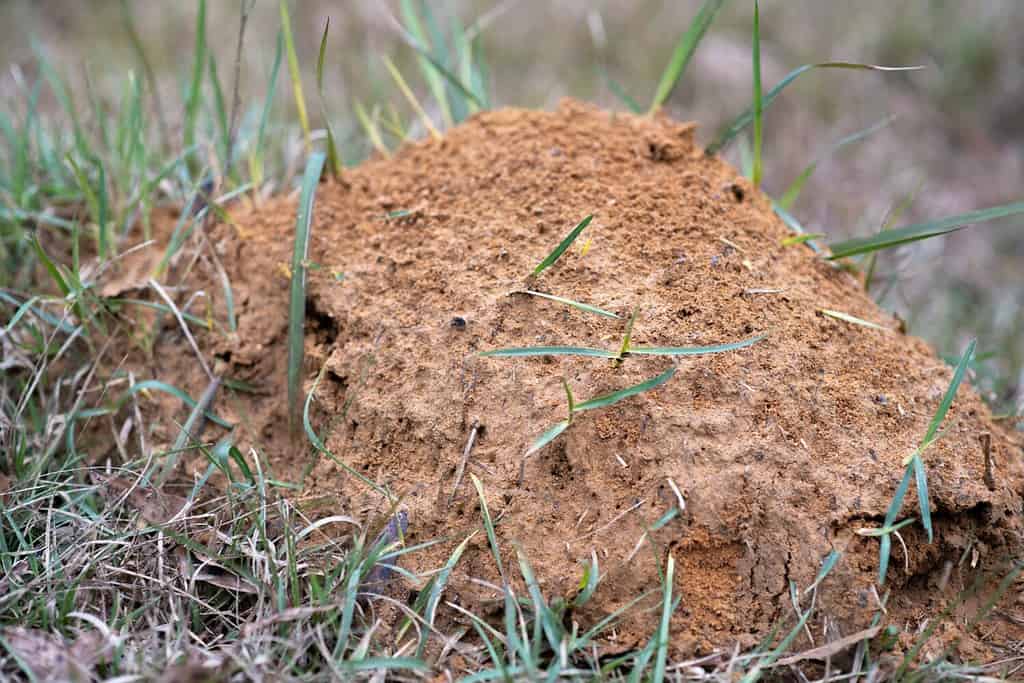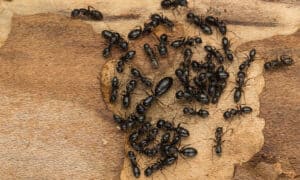Fire ants are some of the toughest insects you’ll find in the U.S. These adaptable survivors can thrive in many different environments and withstand extreme conditions. Fire ants usually build their nests near damp areas underground and often go unnoticed unless they create a visible mound. They live in large colonies with one or a few queens, which can explode in size — reaching thousands in just one month!

In the United States, fire ants typically have reddish-brown heads and chests (thoraxes) with dark abdomens.
©Snehasis Panja/Shutterstock.com
While they don’t intentionally target humans, fire ants aren’t creatures you’ll likely want to share your home with. Their bites cause stinging and burning and can lead to nasty hives on your skin. Fortunately, the most effective homemade fire ant treatment is super simple and uses just two ingredients!
The Most Effective Homemade Fire Ant Treatment

Most animals do not like eating baking soda.
©Geo-grafika/Shutterstock.com
Ingredients:
- Baking soda
- Powdered sugar
Materials/Tools:
- Measuring spoon
- Optional: a container (a jar lid works great)
Instructions:
- Mix equal parts baking soda with equal parts powdered sugar. For example, if you use 1 tablespoon of baking soda, mix it with 1 tablespoon of powdered sugar. If you use 0.5 tablespoons of baking soda, mix it with 0.5 tablespoons of powdered sugar.
- Set the trap. Choose a location where the ants will easily discover your homemade bait. Look for their trails or areas where they seem to be sneaking into your house. You can sprinkle the mixture directly on the ground in these areas, or place it in a small container, such as the lid of a jar, a bottle cap, or on a small plate.
- Watch, wait, and refill as necessary: The sweet smell of the powdered sugar lures the ants to your trap, and they’ll happily take the mixture back to their nest. However, the baking soda hidden within their sugary treat will be their demise — or at the very least, give them a very upset stomach. Keep an eye on your bait, and refill it as often as necessary.
Although we aren’t entirely sure why this method works, there are some theories. Powdered sugar and baking soda particles are tiny but similar in size — enough so that the ants can’t quite tell the difference between them. The sugar is sweet and lures the ants in, but the baking soda disrupts their digestion and causes a very unpleasant reaction in their stomachs.
What Else Can You Do to Keep Fire Ants Away?

Fire ants often build their colonies in mounds of dirt.
©EngineerPhotos/Shutterstock.com
Baking soda and sugar bait can be an easy and effective homemade fire ant treatment. However, it’s important to remember that fire ants are hardy and persistent. These aggressive insects live in large colonies, so if your infestation is severe, this homemade bait might not be enough. Here are some other options you can try:
- Keep your kitchen clean. Sweep floors, wipe down counters, and dust away crumbs hiding under the toaster.
- Clean your kitchen with vinegar. The strong smell confuses ants and makes it hard for them to follow their friends’ trails.
- If you can identify their entry points, you can sprinkle borax or diatomaceous earth around potential access points. These fine powders dehydrate and help to deter the ants from entering your home.
- Seal up any cracks the ants might be using to get into your home.
Remember: It may take some time to see results, no matter what method you use. However, if the fire ants just keep coming back or if there are large colonies around your home, you may want to call in a professional pest control service.
The photo featured at the top of this post is © Yuphayao Pooh's/Shutterstock.com
Thank you for reading! Have some feedback for us? Contact the AZ Animals editorial team.






